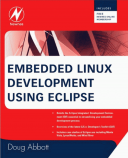Книга: Embedded Linux development using Eclipse
1.1 History
1.1 History
Eclipse grew out of the project that began in 1998 at Object Technology International (OTI), a subsidiary of IBM now known as the IBM Ottawa Lab. The project was initiated to address complaints raised by IBM’s customers that the company’s tools didn’t work well together.
In 2001, IBM established the Eclipse consortium and released the entire code base, estimated to be worth $40 million at the time, as open source. The idea was to let the open source community control the code and let the consortium deal with commercial relations. The initial nine members of the consortium included both partners and competitors of IBM at the time, such as Rational and TogetherSoft.
As Eclipse grew and evolved, IBM wanted more serious commitment from vendors, but vendors were reluctant to make a strategic commitment as long as they perceived that IBM was in control. This problem was addressed in 2004 with the creation of the Eclipse Foundation, a not-for-profit organization with a professional staff and a large and growing roster of commercial software vendors as members.
As of August 2007, the Eclipse Foundation listed 166 members on its web site. There are four categories of membership reflecting different levels of commitment[1]:
• Committers. Individuals who contribute and commit code to Eclipse projects. They may be members by virtue of working for a member organization, or may choose to join independently if they are not. Note that Committers are not included in the membership total above, as they are not listed on the web site.
• Associates. These are standards organizations, research and academic institutions, open source advocates, or publishing houses that participate in the development of the Eclipse ecosystem. There are currently 24 associates who can submit requirements, participate in all project reviews, and participate fully in all Membership Meetings. Associate Members are not assessed dues.
• Add-in Providers. Commercial software vendors who have publicly expressed support for Eclipse. Add-in Providers are expected to make available a commercial Eclipse-based product or service within 12 months of joining the foundation. Products may be built using Eclipse tools or on top of Eclipse projects. Services may include, for example, training, consulting, or a hosted web service. The 121 Add-in Provider Members each pay annual dues of $5,000.
• Strategic Members. These are the big dogs. Strategic Members fall into two categories: Strategic Developers and Strategic Consumers. Each Strategic Developer is expected to have at least eight developers assigned full time to developing Eclipse technology and contribute annual dues of 0.12% of revenue with no minimum and a maximum of $250K.
Strategic Consumers are users of Eclipse technology. They contribute annual dues of 0.2% of revenue with a minimum of $50K and a maximum of $500K, but can reduce the cash outlay by contributing one or two developers to Eclipse projects at a rate of $125K for each developer.
Each Strategic Member has a representative on the Eclipse Foundation Board of Directors allowing them direct control over the strategic direction of Eclipse. Strategic Members also have a seat on the Eclipse Requirements Council providing input and influence over the themes and priorities of Eclipse technology.
There are currently 21 Strategic Members, including IBM, Intel, Motorola, Nokia, Oracle, Sybase, and Wind River, among others.
- Appendix G. History
- APPENDIX A The History of Red Hat and Fedora
- 17.4.4. Wakeup Latency History
- 17.4.6. Interrupt Off History
- 7.1.1. History of Amoeba
- 8.1.1. History of Mach
- 9.1.1. History of Chorus
- 10.1.1. History of DCE
- History
- Xerox, Novell, and History
- Usenet History
- 4.2 A Brief History of Operating Systems




